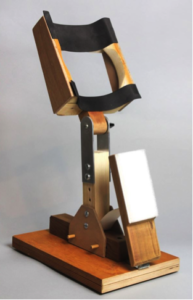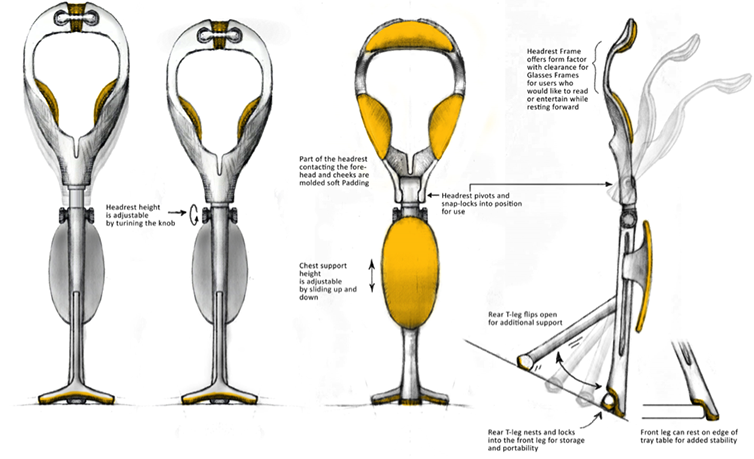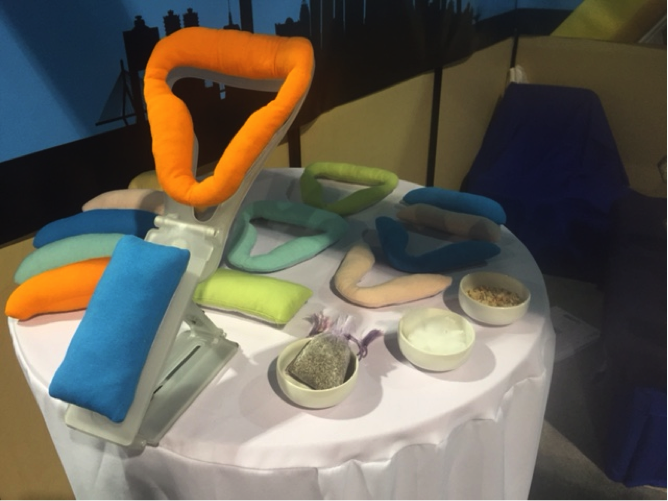By Chloe Hill
When people see the Hypnap TruRest sometimes we are met with the question – Couldn’t the TruRest have a simpler design? Why so many adjustment features?
Our design, with all its adjustments, is based on one important word: research.
When we started developing the first product to allow you to rest in a fully supported, forward leaning position, we knew that we were entering unchartered territory and that we’d need to start almost from scratch as far as design development. We are excited by the knowledge that we’ve explored human centered design problems and made discoveries that to our knowledge have never been investigated, at least not to the level or depth that we’ve accomplished. This is why we’ve filed a patent application!
I started working on this product three years ago. My business partner Darryl signed on about 6 months later. Throughout this period, basic crude prototypes were developed to test the validity of the concept. We began working intensely with our industrial designer and his team about one year after that to refine and develop the product further.
We know that good design will include only the necessary components, nothing less, nothing more. There needs to be a good reason for the existence of each component. A well-designed product will fulfill its purpose as efficiently and as beautifully as possible.
There were many challenges facing our design team. The TruRest needed to be comfortable of course, but it also needed to be collapsible, lightweight and compactable for easy portability. Comfort and portability lie on opposites ends of the spectrum and, as far as qualities go, almost cancel each other out. Oh, and it also needed to look sleek and cool! I am still in awe of our design team for agreeing to help us tackle this challenge!
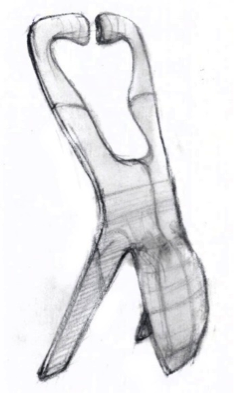 |
 |
 |
| Initial TruRest design concepts (sketches) | ||
We started with the most simple, pared down designs possible and tested each one in different environments both with people in and outside of our team. We wanted to see what we could do with as few components as possible. We also approached back, spine, neck and shoulder specialists – doctors, physical therapists and chiropractors to get their feedback on healthy positioning of the body. In addition, we did research in medical journals, articles and other publications.
Concurrently we tested a plethora of sleep aids that were already on the market to get a thorough understanding of how the problems of resting comfortably in the upright position were already being solved. We tested inflatables, all manner of neck pillows and body support contraptions. Some were designed to rest on the table while others hung or were attached to the body of the user. This gave us insight into correct and incorrect body positioning, practicality and convenience, and what materials felt good against the body.
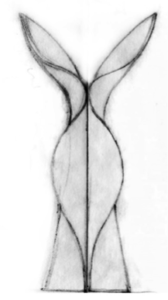 |
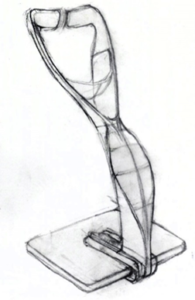 |
| Initial TruRest design concepts (sketches) | |
Our first designs had one or two parts incorporating a chest support, face plate with a cavity for breathing, and a base or anchor. These mock ups included no adjustments features.
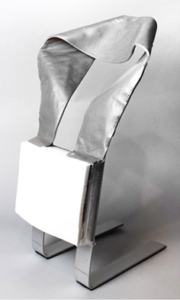 |
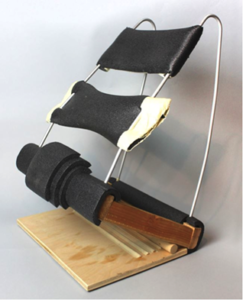 |
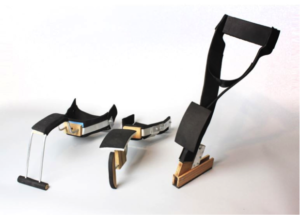 |
| Initial TruRest design concepts (mock-ups) | ||
Based on our testing and to fulfill our comfort needs we began adding adjustments and refining the initial design concepts to increase comfort. We started will a rough mock up with minimal adjustments to address the positioning of the body and head (see below). This provided the basis for the body angle and face plate adjustments.
TruRest design concept with minimal adjustment features included
Your Perfect Angle
The TruRest’s angle adjustment allows you to rest in varying degrees of repose. Why add this adjustment? We found that comfortable angles for resting differed across the board with a variety of people. For example, I prefer to rest in a more downward position, whereas Darryl and our industrial designer prefer to rest in a more upright position.
The face plate adjusts in angle allowing one to assume different neck positions. Why incorporate this adjustment? We all have a natural curve in our necks and for people who are more comfortable maintaining this curvature, the TruRest’s face plate adjusts upward to place the head in a more upright position. Some people are more comfortable extending or “distracting” the neck which straightens out the curvature in the neck. Sometimes chiropractors will induce this neck position to relieve pain for those with certain neck and shoulder problems. For those who prefer this position the face plate also adjusts down to place the neck in a more downward position.
We then added two height adjustments, which controls the length of the body of the TruRest, and began in depth ergonomic studies of the face plate and how to support the face comfortably.
Early TruRest rendering including height adjustments and face plate concepts
The pivot lock height adjustment accommodates the majority of the population. We added the incline slide adjustment to accommodate taller people or those with long torsos.
We discovered that the distribution of weight was key to comfort in the face region. Thus the face plate was redesigned accordingly. The opening was widened to accommodate those wearing eye glasses.
We then began to explore cushioning to enhance comfort in the face and chest regions.
The cushions that sit on the face plate of the TruRest are removable and adjustable. I have a narrow face and preferred placing the face cushions closer together whereas Darryl had a wider face and preferred placing the cushions further apart. The type of material that we use for the face plate cushions is also crucial to creating an even distribution of weight in the facial region.
We also discovered where chest support was needed. We designed the chest cushion to be removable and adjustable because we found that some people prefer to be supported on the upper chest region and others prefer support on the lower chest region. For example, I prefer the support lower in the chest region whereas a number of our testers preferred support in the upper region of the chest.
Initial TruRest cushion prototypes
Testing the prototypes in different environments such as airplane cabins and trains compelled us to make additional modifications. We added a proximity adjustment to allow closer, easier contact with the body and also to create more space with which to lean forward in cramped spaces. One of our testers preferred to sit further back in the seat and thus adjusted the proximity feature so that it was at the maximum setting sliding towards his body.
We then added feet to the base to increase stability in case of turbulence. We also modified and streamlined the adjustments to make them easier to use. For example, we added a color coding system to mark the adjustment features.
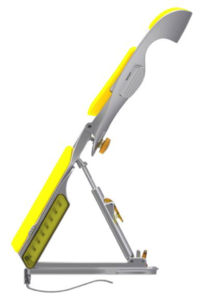 |
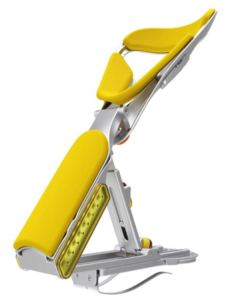 |
| TruRest design concept including feet and color coded adjustment features | |
After almost a year and a half of in depth testing and ergonomic studies, we ended up incorporating seven different adjustment components into the TruRest.
In the end what we discovered is that each person had different ideas of what is comfortable and, in order to meet those diverse comfort requirements, it is imperative to include all of the different adjustment features that the TruRest currently offers.
If you’ve felt the agony of sitting in the upright position for long periods of time, we urge to you try our TruRest! We worked hard for it to make you feel great.

